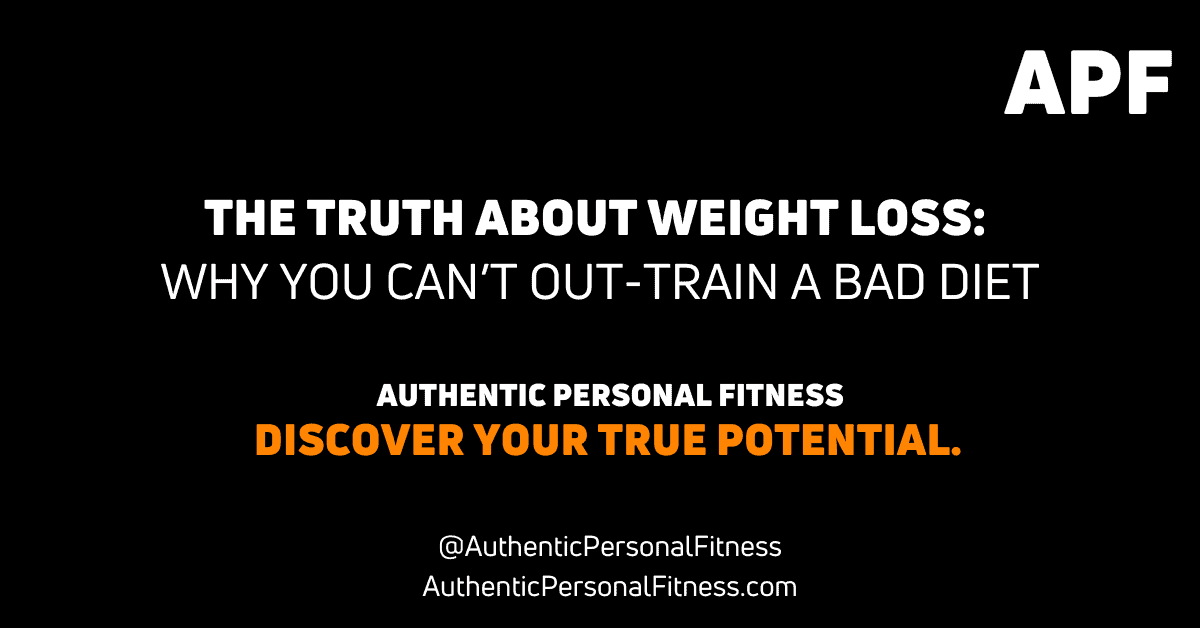The Truth About Weight Loss: Why You Can’t Out-Train a Bad Diet

The Truth about Weight Loss
When it comes to losing weight, many people believe that exercise alone will get them there. But the reality is simple: you cannot out-train a bad diet. No matter how much time you spend in the gym, if your diet is not aligned with your weight loss goals, progress will be slow—or even nonexistent.
If you’re serious about shedding pounds, caloric deficit is the key. In this blog, we’ll break down the science of weight loss, how to calculate your calorie deficit, and why no diet is a “magic” solution.
The Science of Weight Loss: Caloric Deficit Explained
At its core, weight loss comes down to a simple formula: calories in vs. calories out. If you consume fewer calories than you burn, you lose weight. This is known as a caloric deficit.
💡 The Numbers Behind Fat Loss
• 1 pound of fat = 3,500 calories
• To lose 1 pound per week, you need a 500-calorie deficit per day (500 x 7 = 3,500).
• To lose 2 pounds per week, aim for a 1,000-calorie deficit per day (1,000 x 7 = 7,000).
This deficit can be created in two ways:
1.Eating fewer calories (adjusting your diet)
2. Burning more calories through exercise (physical activity)
3.A combination of both (best approach for sustainable weight loss)
Research from Healthline supports the idea that sustained caloric deficits lead to fat loss, while maintaining proper nutrient intake ensures a healthy and sustainable weight loss journey.
It’s important to understand that weight loss is personal—factors like age, gender, metabolism, and activity level all impact how much of a deficit you need to see results (Mayo Clinic).
Are Some Diets Better Than Others?
Many people jump from keto, carnivore, high-carb, low-fat, or high-protein diets, hoping to find the “magic” solution for weight loss. But the truth is, no single diet is inherently better for fat loss—they all work by helping you reduce your calorie intake in different ways.
✅ Keto – Cuts carbs to force the body to use fat for fuel.
✅ Carnivore – Eliminates carbs entirely, leading to fewer calories consumed.
✅ High-Protein Diet – Keeps you full longer, reducing overeating.
✅ Low-Fat Diet – Limits calorie-dense fats, naturally reducing overall intake.
At the end of the day, all these diets help you eat fewer calories, which is what leads to weight loss—not the diet itself.
Why “Calories In vs. Calories Out” Is What Really Matters
People often overcomplicate weight loss, but it really comes down to burning more calories than you consume. Here’s how to make it work for you:
✔ Track Your Calories – Use apps like MyFitnessPal to monitor food intake.
✔ Prioritize Protein – Keeps you full longer and preserves muscle while losing fat.
✔ Lift Weights & Stay Active – Strength training helps burn more calories even at rest.
✔ Stay Consistent – Small, daily deficits add up over time.
No need to stress over the perfect diet—focus on what you can stick to long-term.
Final Thoughts: Keep It Simple, Stay Consistent
Losing weight doesn’t have to be complicated. There’s no magic diet, no secret workout—just a simple equation: consume fewer calories than you burn.
💡 Want to take control of your nutrition and fitness? At Authentic Personal Fitness, we help people achieve their goals through sustainable, science-backed strategies. Whether you want to lose weight, build muscle, or improve your performance, we’ve got you covered.
👉 Contact Authentic Personal Fitness today and take the first step toward lasting results!